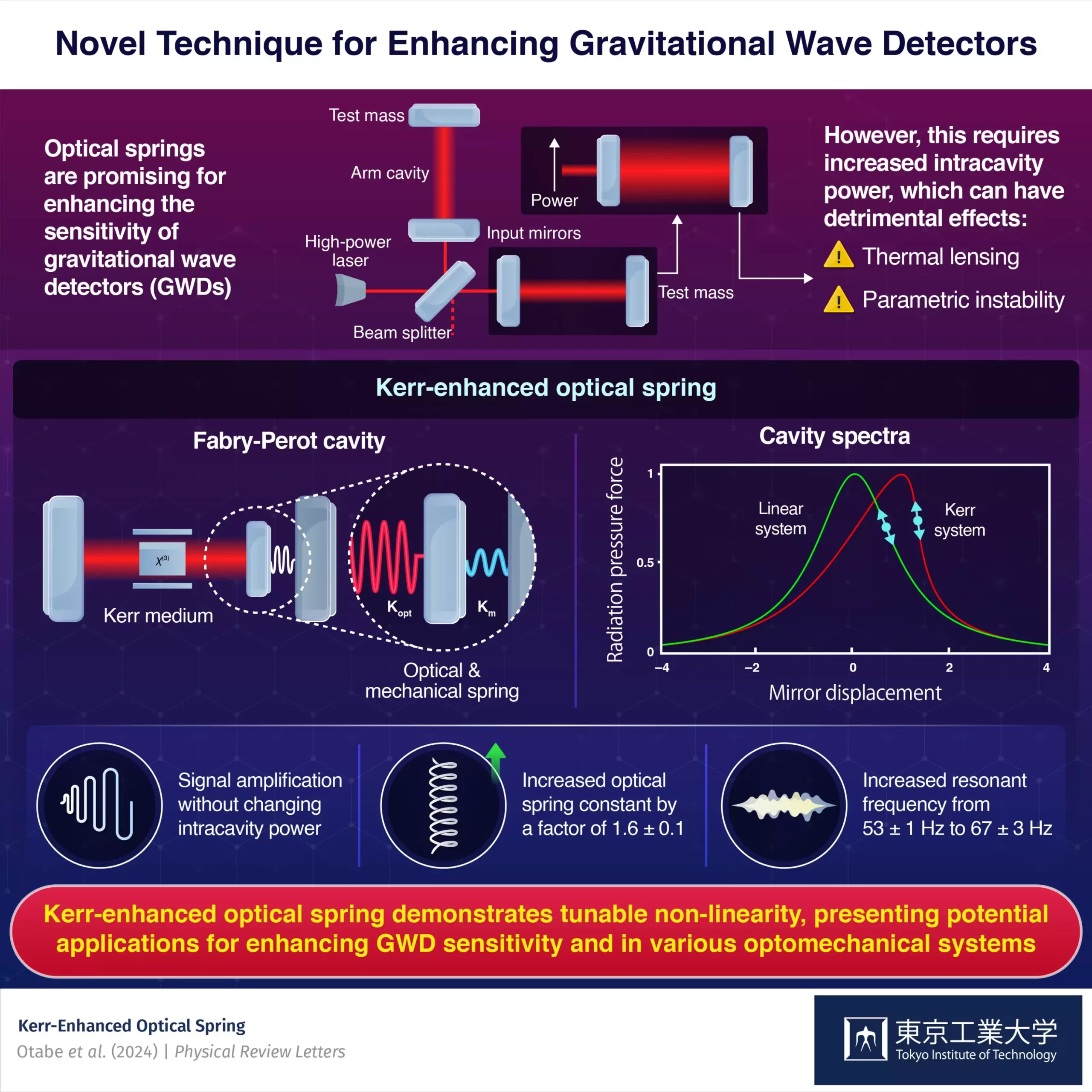The detection of gravitational waves has been considered one of the most important achievements in modern physics. In 2017, the first detection of gravitational waves from the merger of a binary neutron star provided crucial information about our universe, shedding light on the origin of short gamma-ray bursts and the formation of heavy elements. Despite this groundbreaking discovery, the detection of gravitational waves from post-merger remnants has proven to be challenging due to the limitations of modern gravitational wave detectors (GWDs).
The frequency range of post-merger gravitational waves falls outside the capabilities of current GWDs, making these elusive waves difficult to detect. These waves hold valuable insights into the internal structure of neutron stars, making it essential to develop next-generation GWDs with enhanced sensitivity. One promising approach to improving GWD sensitivity is through the use of optical springs, which can amplify gravitational wave signals.
A team of researchers from Japan, led by Associate Professor Kentaro Somiya and Dr. Sotatsu Otabe from the Department of Physics at Tokyo Tech, recently developed a groundbreaking solution to enhance the sensitivity of GWDs: the Kerr-enhanced optical spring. This innovative design utilizes intracavity signal amplification to increase the optical spring constant without the need to increase intracavity power. By leveraging the optical Kerr effect in a Fabry-Perot type optomechanical cavity, the researchers were able to enhance the resonant frequency of the optical spring from 53 Hz to 67 Hz, representing a significant improvement in sensitivity.
The introduction of the Kerr-enhanced optical spring represents a major advancement in the field of optomechanical systems. By using a Kerr medium to induce the optical Kerr effect in the cavity, the researchers were able to significantly enhance the optical spring constant, paving the way for improved detection of gravitational waves. The technique is not only easy to implement but also provides a novel tuneable parameter for optomechanical systems, making it a versatile tool for a wide range of applications.
The development of Kerr-enhanced optical springs holds great promise for the future of gravitational wave detectors. With further refinement and optimization, this novel design could play a key role in enhancing GWDs’ sensitivity and unraveling the mysteries of our universe. By harnessing the full potential of optomechanical systems, researchers can take significant strides towards a deeper understanding of the cosmos and the phenomena that shape our world.


Leave a Reply